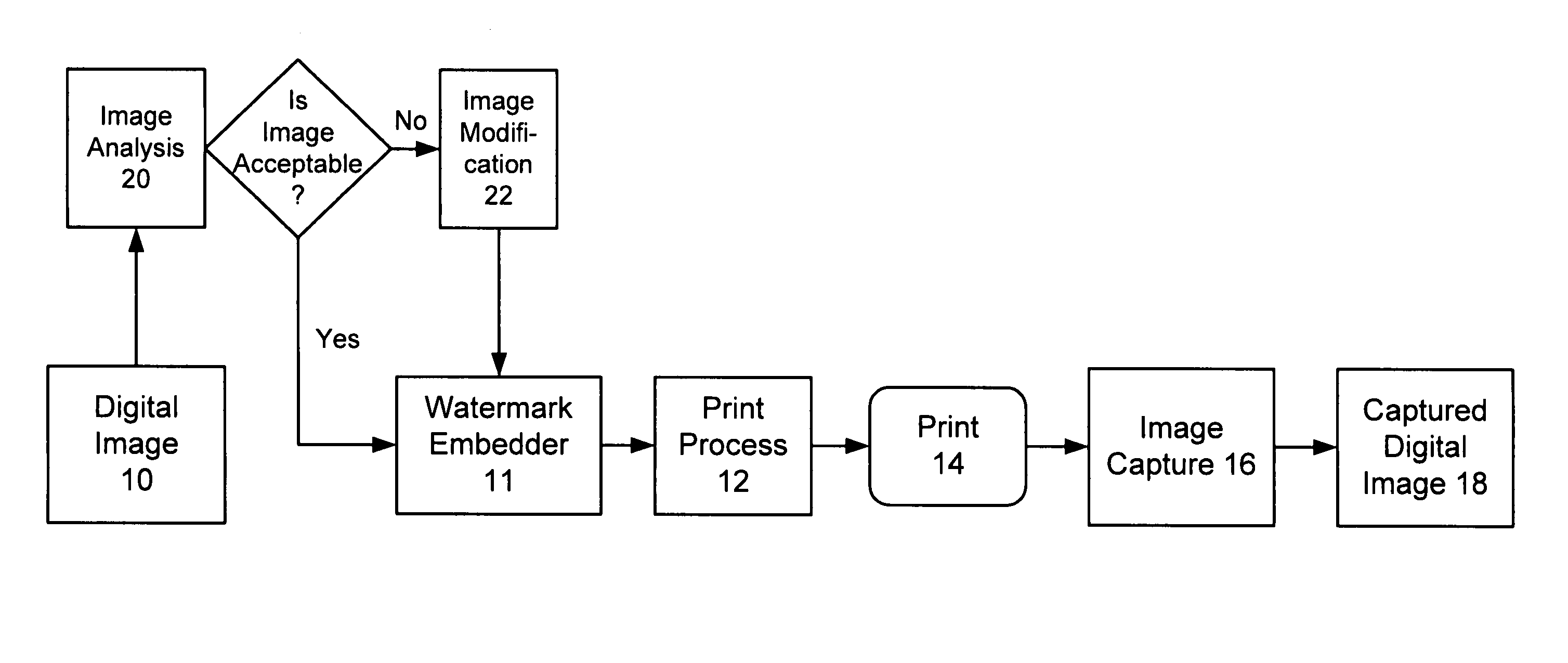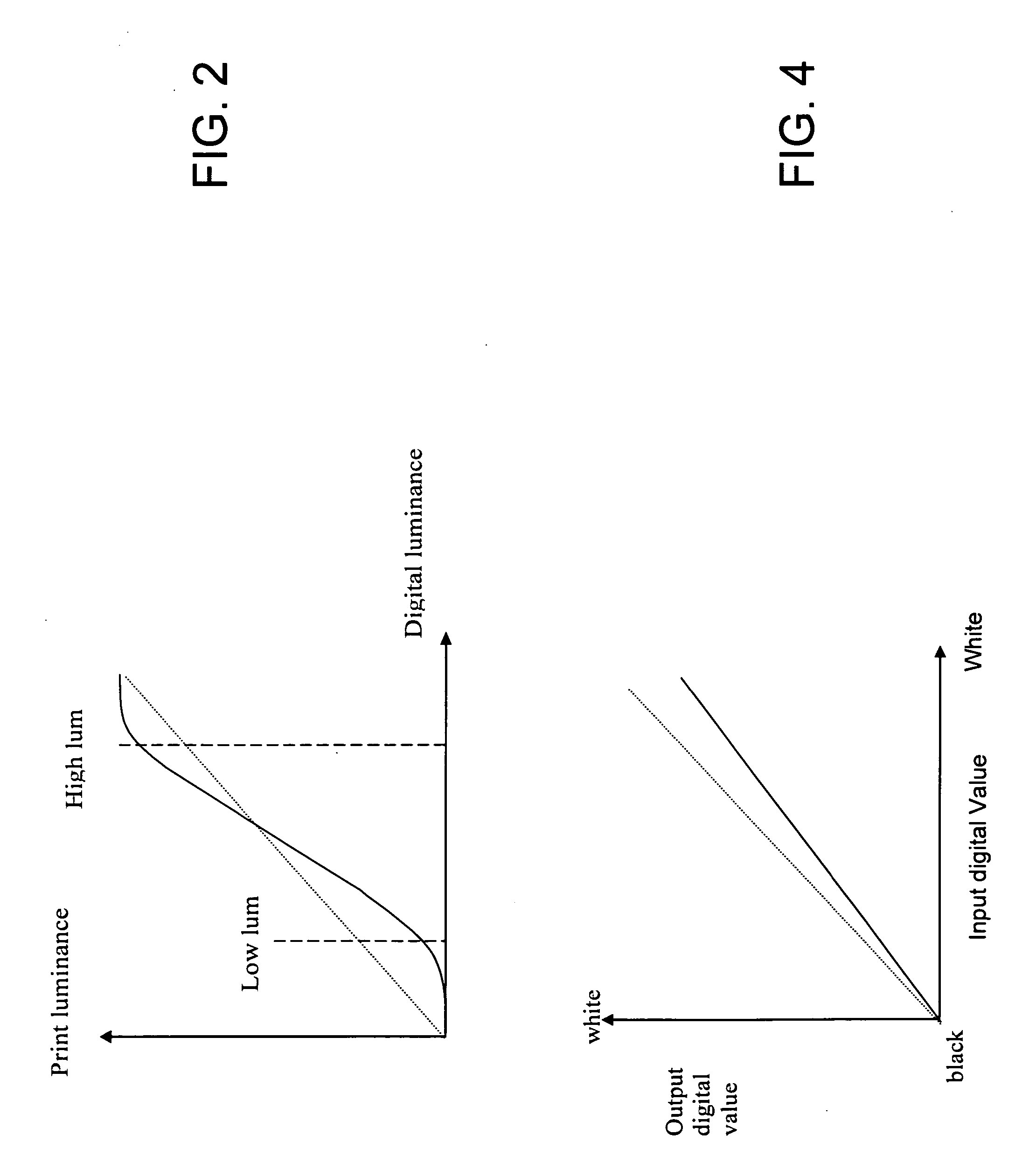Conditioning imagery to better receive steganographic encoding
- Summary
- Abstract
- Description
- Claims
- Application Information
AI Technical Summary
Benefits of technology
Problems solved by technology
Method used
Image
Examples
Embodiment Construction
[0036]FIG. 1A illustrates a conventional image workflow. A digital image 10 is received. For example, the image is captured by a digital camera, converted to a digital image from conventional film, or obtained via an optical scanning device. The digital image 10 is printed by printer 12 onto a substrate 14. For example, if digital image 10 includes a photograph, it may be printed onto an identification document, such as a passport, driver's license or other photo ID. Printed substrate 14 is expected to be eventually captured by an image capture device 16 (e.g., an optical sensor, scanner, digital camera, cell phone camera, etc.). The image capture device 16 produces a digital representation 18 of substrate 14, including a representation of digital image 10 printed thereon.
[0037] We can make predictions of resulting image quality based on components (e.g., printer 12 and capture device 16) in a workflow. Moreover, we can make predictions of a workflow system to even more successfull...
PUM
 Login to View More
Login to View More Abstract
Description
Claims
Application Information
 Login to View More
Login to View More - R&D
- Intellectual Property
- Life Sciences
- Materials
- Tech Scout
- Unparalleled Data Quality
- Higher Quality Content
- 60% Fewer Hallucinations
Browse by: Latest US Patents, China's latest patents, Technical Efficacy Thesaurus, Application Domain, Technology Topic, Popular Technical Reports.
© 2025 PatSnap. All rights reserved.Legal|Privacy policy|Modern Slavery Act Transparency Statement|Sitemap|About US| Contact US: help@patsnap.com



